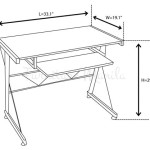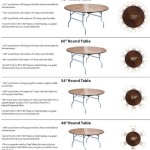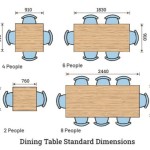Table Leaf Storage Bag: Preserving Your Dining Investment
Dining tables often serve as the centerpiece of a home, facilitating gatherings and creating lasting memories. Many tables are designed with extension leaves, panels that can be inserted to increase the table's surface area for accommodating larger groups. When these leaves are not in use, proper storage becomes crucial to prevent damage, warping, and fading. A table leaf storage bag provides a practical and effective solution for maintaining the pristine condition of these valuable components.
The purpose of a table leaf storage bag is multifaceted. Foremost, it provides a physical barrier against external elements that can degrade wood finishes and structural integrity. Dust, moisture, and sunlight pose significant threats to wooden furniture, and a protective bag mitigates these risks. Furthermore, the bag safeguards against scratches, dents, and abrasions that can occur during storage and handling. By encasing each leaf individually, the bag minimizes the potential for surface damage, ensuring the leaves remain in optimal condition for future use.
Beyond physical protection, a quality table leaf storage bag offers organizational benefits. Leaves can be stored together in a designated location, eliminating the need to search for them when needed. This streamlined approach saves time and prevents the leaves from being misplaced or damaged while stored haphazardly. The bags often incorporate features like handles or labels to further enhance organization and ease of handling.
Protection from Environmental Factors
One of the primary benefits of a table leaf storage bag is its ability to shield the leaves from environmental factors. Temperature fluctuations, humidity, and direct sunlight can have detrimental effects on wood. Wood naturally expands and contracts with changes in temperature and humidity. This constant movement can lead to warping, cracking, and weakening of the wood structure over time. A storage bag, especially one made of breathable material, helps to moderate these fluctuations and minimize their impact on the leaves.
Humidity is a particularly damaging factor. Excessive moisture can cause wood to swell, leading to distortion and potential mold growth. Conversely, extremely dry conditions can cause wood to shrink and crack. The storage bag creates a microclimate around the leaves, reducing the rate at which moisture penetrates or escapes the wood. This helps to maintain a more stable moisture content, preserving the wood's integrity.
Sunlight, specifically ultraviolet (UV) radiation, can fade or discolor wood finishes. Different types of wood react differently to UV exposure, but prolonged exposure invariably leads to a change in appearance. A table leaf storage bag acts as a barrier against UV radiation, preventing the fading and discoloration that can occur over time. This is especially important for leaves that are not regularly used and may be stored for extended periods.
The material of the storage bag plays a crucial role in its effectiveness. Breathable materials like cotton canvas or muslin allow air circulation, preventing the buildup of moisture and reducing the risk of mold growth. Heavier materials, such as quilted fabrics or vinyl-coated canvas, offer enhanced protection against physical damage and moisture penetration. The choice of material should be based on the specific storage conditions and the desired level of protection.
Furthermore, the construction of the bag should be considered. Reinforced seams and durable zippers or closures ensure that the bag can withstand the weight of the leaves and the stresses of handling. A well-constructed bag will provide years of reliable protection, making it a worthwhile investment for preserving valuable table leaves.
Preventing Physical Damage
Accidental scratches, dents, and abrasions are common occurrences during storage and handling. Table leaves, being relatively large and often heavy, are particularly vulnerable to these types of damage. A table leaf storage bag provides a cushioning layer that minimizes the risk of physical damage. The bag acts as a buffer, absorbing impacts and preventing direct contact between the leaves and other objects.
The type of cushioning provided by the bag depends on its design and materials. Padded bags, typically made with quilted fabric or foam padding, offer the highest level of protection against impacts. These bags are ideal for storing leaves that are likely to be moved frequently or stored in areas where they may be subject to bumps or collisions. Non-padded bags, made of materials like canvas or muslin, provide a basic level of protection against scratches and abrasions.
Individual sleeves or compartments within the storage bag further enhance protection. Each leaf is stored separately, preventing them from rubbing against each other and causing scratches. This is particularly important for leaves with delicate finishes or intricate details that are easily damaged. Sleeves also help to distribute the weight of the leaves evenly, reducing the stress on the bag's seams and closures.
The size and shape of the storage bag should be carefully considered to ensure a proper fit for the table leaves. A bag that is too small may compress the leaves, potentially causing damage to their edges or surfaces. A bag that is too large may allow the leaves to shift around during storage, increasing the risk of scratches and abrasions. Ideally, the bag should fit snugly around the leaves, providing adequate cushioning and preventing movement.
The closure mechanism of the bag is also important for preventing physical damage. Zippers, Velcro closures, or tie closures should be secure and easy to use. A loose or faulty closure can allow the leaves to slip out of the bag, exposing them to potential damage. The closure should also be designed to prevent dust and debris from entering the bag.
Organization and Ease of Handling
Beyond protection, a table leaf storage bag offers significant organizational benefits. Storing table leaves can be a challenge, especially in homes with limited storage space. Leaves are often bulky and awkwardly shaped, making them difficult to store efficiently. A storage bag provides a designated location for the leaves, keeping them organized and readily accessible when needed.
Many storage bags are designed with features that enhance organization and ease of handling. Handles or straps are commonly included, allowing for easy carrying and lifting. This is particularly helpful for heavier leaves that require two people to move. The handles should be sturdy and securely attached to the bag to prevent them from breaking or tearing under the weight of the leaves.
Labels or clear windows on the bag can help to identify the contents without having to open it. This is especially useful if you have multiple sets of table leaves or other similar items stored in the same area. A simple label indicating the table to which the leaves belong can save time and effort when searching for the correct leaves.
Some storage bags are designed to be stackable, allowing for efficient use of vertical storage space. Stackable bags typically have reinforced bottoms and sides to prevent them from collapsing under the weight of the upper bags. This is a valuable feature for homes with limited floor space or those who prefer to store their leaves in a closet or storage unit.
The shape of the storage bag can also contribute to its organizational benefits. Rectangular or square bags are generally easier to stack and store than oddly shaped bags. Consider the shape and dimensions of your storage space when selecting a storage bag to ensure that it fits efficiently.
In addition to the bag itself, consider the location where the leaves will be stored. A cool, dry place is generally the best option for storing wooden furniture. Avoid storing leaves in areas that are subject to extreme temperature fluctuations, high humidity, or direct sunlight. A closet, spare room, or temperature-controlled storage unit are all suitable options.
Ultimately, a table leaf storage bag is an investment in the longevity and appearance of a dining table. By protecting the leaves from environmental factors, preventing physical damage, and providing organizational benefits, the bag helps to ensure that the table remains a cherished piece of furniture for years to come. The cost of a quality storage bag is minimal compared to the cost of repairing or replacing damaged table leaves.

Pioneer Table Pad Company Leaf Storage Bags

Table Leaf Storage Bag W J Hagerty Sons

Table Leaf Cover Storage Bag 548 1 The Home Depot

Hagerty 25 In X 54 Gray Table Leaf Storage Bag 19910 The Home Depot

S Enterprises

Laminet Table Leaf Storage Bag Water And Scratch Resistant Assorted Sizes

Quilted Table Leaf Storage Bag Coopers Of Stortford

Household Essentials Quilted Table Leaf Storage Bag Macy S

Hagerty Table Leaf Storage Bag The Container

Laminet Table Leaf Storage Bags Covers For The Home Coversforthehome
Related Posts








